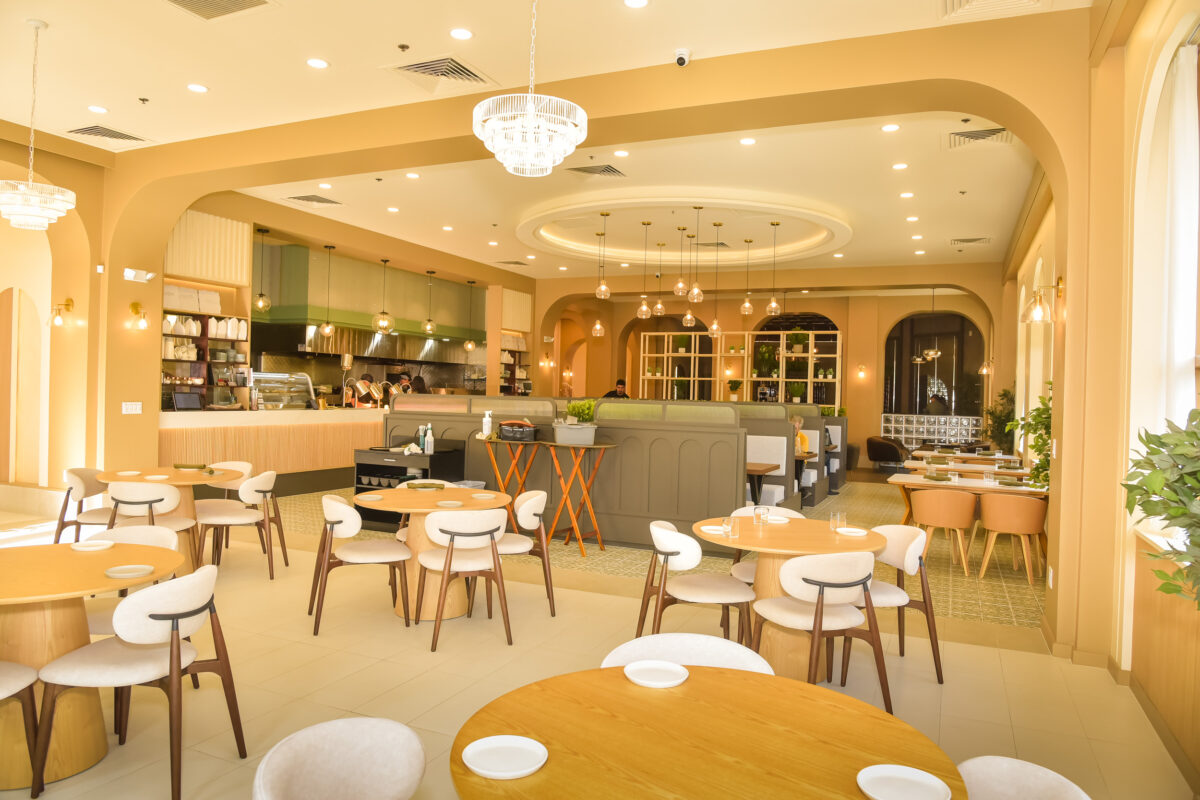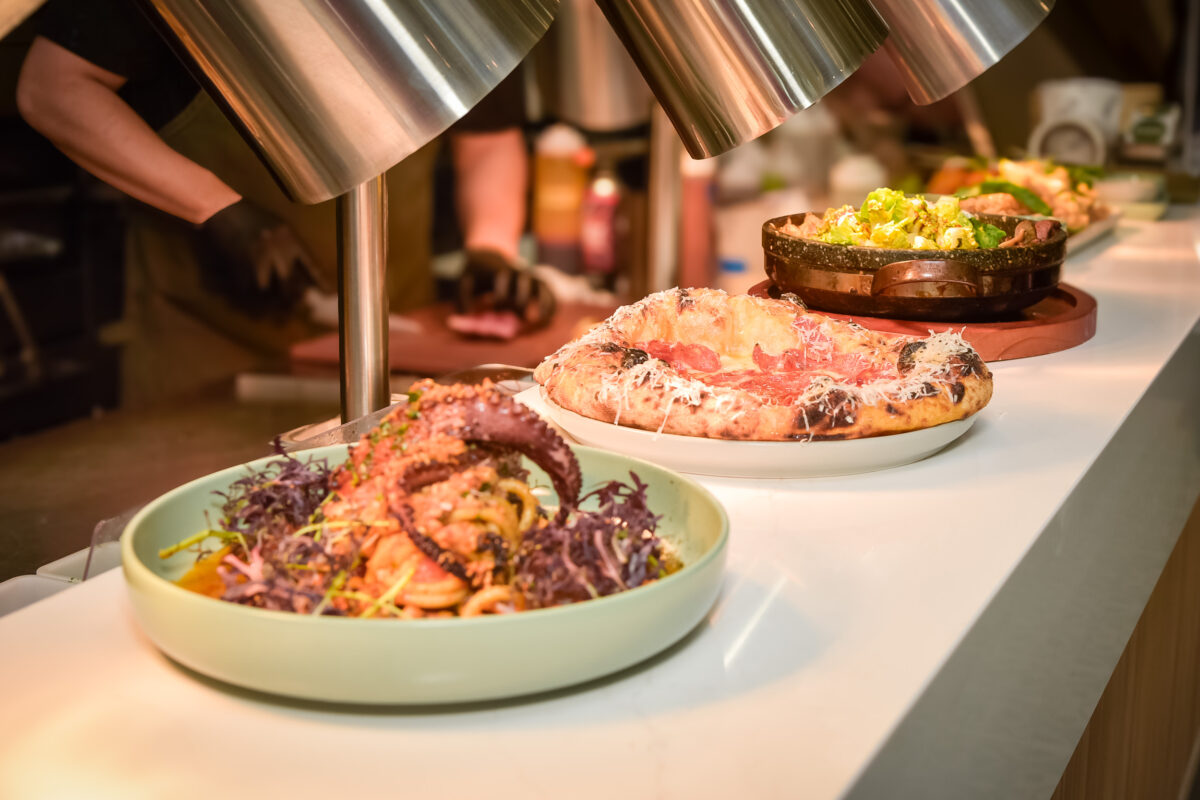Sugo Social kitchen team has talent to spare
by Richard Foss
There are fads in restaurant naming, some of which originally made sense but were overused to the point where they lost all meaning. Places called cafes used to serve only coffee, while a restaurant, whose name comes from the French “I restore you,” served mainly broths that were regarded as health foods, and therefore restorative. The idea of having a full meal in a place called a café or just a cup of coffee in a restaurant would have been ridiculous in the early days of either.
Other name trends established an expectation of the ambiance rather than the cuisine – an Italian trattoria, osteria, and ristorante might have the same items on their menus, but the designation signaled a very different price and standard of service.
One of the recent trends is to put the word “social” in a restaurant name, which started at places that were as much gaming halls as they were eateries. The trend began with casual places that offered tavern food alongside darts, ping-pong, and board games, encouraging a high level of social interaction. Local examples include the R10 Social House and Rebel Republic Social House in Redondo, and there are plenty more. They’re bright, casual, boisterous, and the food is usually secondary to the party atmosphere aided by alcohol consumption.

If you go to Sugo Social, the restaurant that opened two months ago on the second floor of the Promenade, you’ll find a very different vibe. The environment is decorated with old school style soft lighting, the cream colored walls accented with blond wood and plants, the volume level is low, and there is plenty of room between tables. It’s a calm and restful environment where a game of cornhole or jenga does not seem likely to break out.
According to a server, the word sugo means “sauce” in Italian, and “job well done” in Korean. Whoever came up with this name for a restaurant that incorporates both of those traditions into their cuisine has some skill at marketing. The cultural influences are much broader, with an owner from Brazil and a chef who is Peruvian, but spent years cooking in Korea. It’s not easy to tell at first glance of the paper menu, because some descriptions are on the terse side and sometimes don’t convey what is actually coming out of the kitchen. The menu is also hard to read, with pale print on a colored background. Much fuller descriptions and pictures of the food are available online, so you might want to bring your iPad if you don’t want to pepper your server with questions.
Meals begin with complimentary pao de queijo, the addictive Brazilian cheese stuffed rolls. The ones here are about twice the size of those served in most Brazilian restaurants, and are accompanied by garlic mayo with chives. Take it as a sign – portions here are generous. We didn’t realize this and ordered several starters, including calamari, chicken lettuce wraps, Szechuan chicken sliders, and empanadas. The empanadas were best, corn flour turnovers stuffed with ground chicken, vegetables, and cream cheese. In a nod to the chef’s Peruvian heritage, they were topped with pickled purple onion and served over salad alongside an extremely spicy chimichurri sauce. I wish a milder dipping sauce had been offered, because this was almost shockingly hot, but they were good just as they arrived.
The Szechuan chicken sliders were a conventional bar snack well executed, big chunks of moist honey glazed chicken fried with a crisp interior accented by pickled cabbage, onions, and a medium-spicy sauce. The lettuce cups stuffed with vegetables and crispy rice noodles were even better in balancing sweet and flavor with multiple textures, but one detail was off. Lettuce cups are usually served in actual cups made of multiple layers of iceberg or butter lettuce, but each of these were wrapped in one not very large leaf of romaine. They all fell apart as soon as you took a bite, sending sauce toward your lap. If they change the lettuce and give you enough that a cleaning bill isn’t inevitable, I’d happily get them again.
After these deftly composed and well made items, the calamari was a surprise. I’m not sure exactly what went wrong, but the batter was greasy and came off in large pieces. Given the quality of the other starters, this was probably the kind of mistake that can happen anywhere.

We tried two salads, the Modena salad that showed a distinct Italian influence and a green goddess kale salad with pickled fruit and sliced fennel. The Modena was successful, butter lettuce with candied walnuts, goat cheese, shallots, and Italian parsley. The somewhat sweet balsamic vinaigrette would not have been my first choice with this, but it worked. The so-called green goddess salad was a disappointment because of a poor dressing choice – mixing a traditional green goddess dressing with that balsamic. Traditional green goddess dressing is herbaceous and creamy, based on sour cream blended with herbs with a little anchovy and mustard. Modern recipes add avocado and use different herbs than the chervil or watercress, but retain that character. The salad here had an odd sweet overtone that clashed with the herbal flavors, and I asked our server for a bit of the dressing to taste. She brought out two containers of dressing, one with a decent green goddess dressing and the other with the sweet vinaigrette, and said that we should mix them – that’s what had been done with the salad we were served. I expressed that we all found the salad inedible as it was served and would have preferred to have just the one dressing.
On two visits, one with a large party, we ordered about half of the menu and found some items that really hit the spot. The picanha steak had an ornate presentation atop layers of cream of spinach, oven roasted tomatoes, puff pastry, and mashed potatoes, and was topped with a mushroom reduction and a cheese crisp. It was served with the spicy chimichurri but didn’t need it, because it was already well-accented with a peppery rub. Ask for it rare or medium-rare, because this cut gets tough when cooked further, but get it.
Other standout dishes were the hot honey and sopressata pizza, potato gnocchi with Korean squash, and the stone pot Korean bibimbap. Bibimbap goes against the stereotype of all Korean dishes being very peppery – it’s a very hot bowl filled with rice and then topped with grilled beef and a variety of cooked and raw vegetables, then crowned with a fried egg. There’s just a dash of gochujang pepper sauce, but the focus is on the natural flavors and textures of the various ingredients. The portion is immense, and you might order this and a pair of sides as a dinner for two.
The potato gnocchi harmonized with traditional Italian tastes despite the use of Korean squash rather than butternut or another variety. Korean squash is a bit sweeter, and it shines in a puree with cream, Parmesan, and some garlic. The gnocchi had been made in the traditional soft style and then briefly fried to get a slight crust, a fine idea. This came with some good toasted sourdough, which was deployed to get every bit of that luscious sauce.

The pizza had a Neapolitan crust with raised edges that had the “leopard spots” from a high heat oven, and the mix of hot honey and garlicky, peppery salami nailed the sweet/spicy balance. It was a simple item done very well. A slice per person would be a fine starter for a table of four.
Another successful item was the shrimp miso pasta, spaghetti tossed with large prawns, bacon, mushrooms, and sofrito spice mix and topped with mustard greens and sesame seeds. The large mustard leaves should have been chopped rather than left whole so they’d be easier to integrate with the other flavors in the dish, but that’s a minor quibble in a generally successful dish.
One other entree didn’t quite reach the heights of those entrees, but had its charms. When I saw a seafood pan roast of crab and shrimp in a seafood reduction, it led me to expect chunks of shellfish over a bed of sauce and rice. Instead this was more of a chowder with a rice ball on top. The sauce had a rich flavor, but the dish was missing something – a bit of vegetable like some spinach and onion would have improved the flavor and texture balance.
As I mentioned, places with the word social in their name usually push the alcohol, but that was not the case here – they barely have any. The wine list is very short and rather peculiar – many food choices are spicy, made with seafood, and/or have an Italian influence, but of the three white wines available by the glass, two are oaky Californians that don’t pair well with these. Only the Moroki Sauvignon Blanc will complement spicy food or seafood, and it’s a decent but not exceptional example of the Marlborough style. The red list is better chosen, but also short. When I asked a server about the lack of choices, she explained that the restaurant was still in soft opening mode. One would think that after two months, they’d have noticed this deficiency and ordered a few cases of something that fit their food. The Chalk Hill Chardonnay that we ordered was served ice cold, though the same server noted that they’re improving their wine storage. Until they improve their list, I suggest bringing your own so you can partner this food with the wine it deserves.
A variety of dessert pastries are offered, but they were less interesting than the savory items, and on both visits we indulged on those and hadn’t saved room. We left with takeout boxes (I did mention that the portions are generous), and a sense that we had dined at a promising work in progress. Sugo Social has a muddy identity and a few things that need fixing, but the kitchen team obviously has talent to spare.
Sugo Social is at 550 Deep Valley Dr. #265, Rolling Hills Estates. Open 11 a.m. – 8 p.m. daily. Free parking in structure, wheelchair access good. Sound level low. Some vegan items, others can be made vegan. (310) 265-4855. SugoPV.com. Pen









